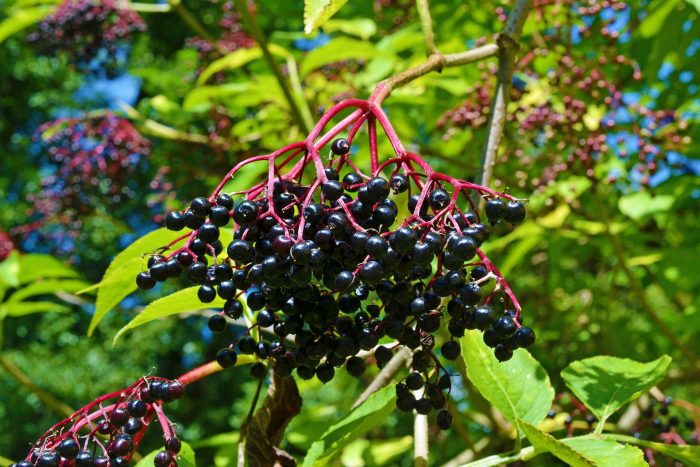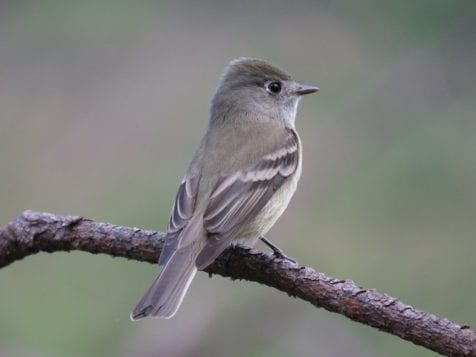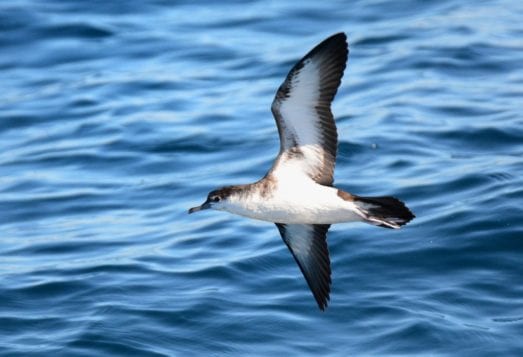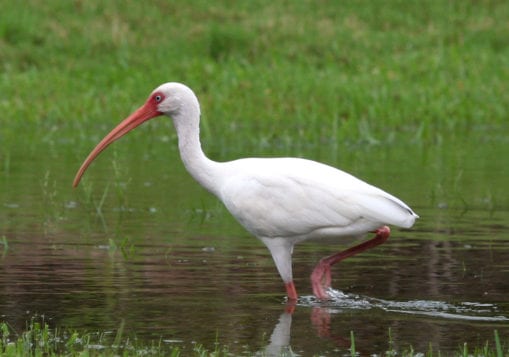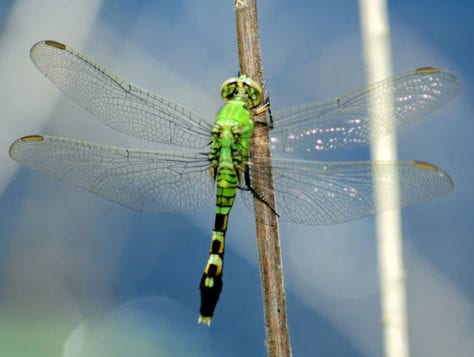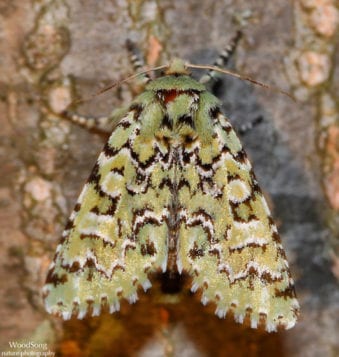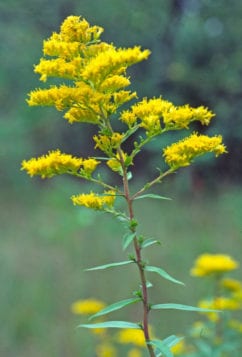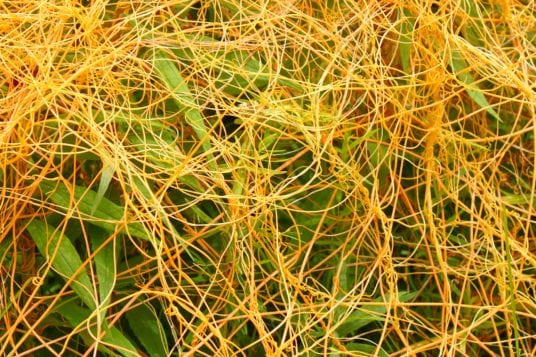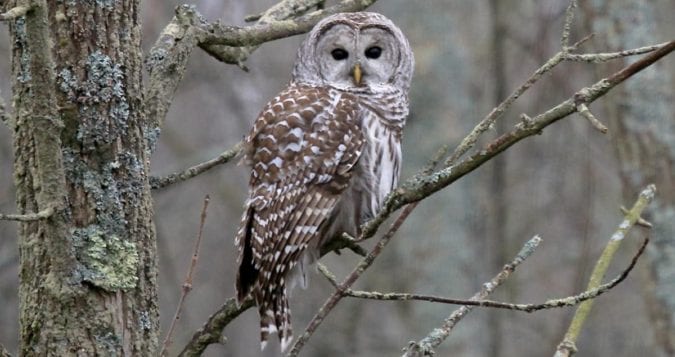Make your home a haven for wild things
By John L. Turner
One of the basic axioms in ecology is that no living thing exists in isolation, that each species in an ecosystem is varyingly affected by others species and, in turn, has an effect upon them. John Muir, the famous naturalist and founder of the Sierra Club, understood this more than a century ago when he observed: “When we try to pick out anything by itself, we find it hitched to everything else in the universe.” As it relates to humans, this idea was made famous by John Donne’s famous quote: “No man is an island entire of itself,” that each of us is affected by those around us upon whom we also have an effect.
In ecosystems these effects are numerous and varied, and can be both easy and hard to quantify. Competition for light, water, and nutrients between species is well known but as Suzanne Simard’s recent revelatory book Finding the Mother Tree documents, a surprising amount of cooperation exists between trees in a forest, involving both individuals of the same species and between tree species.
Among animals there’s cooperation too. Parents nourish offspring (with older offspring of scrub jays helping parents feed newborn offspring), and dolphins, whales and pelicans hunting together. But there’s also competition among animals — witness the interaction between ospreys and the resurging bald eagle population on Long Island. In all ecosystems there are predators sustained by an even larger base of prey, there’s host — parasite relationships, and, importantly decomposers and recyclers who prevent dead organic matter from accumulating by recycling nutrients and energy back into the system.
These relationships can conveniently (and simplistically) fit into one of three categories — positive, neutral, or negative for the species involved, or often and more typically, positive for one and negative for the other (think: Osprey catching and eating a fish). But the relationship can be positive for both as is the case with a pollinating bee and a wildflower — the bee secures nectar, pollen or both for itself and its young and the plant produces new progeny, in the form of seeds, through the pollination process.
Non-native species, like the overwhelming number of wildflowers, shrubs, and trees in most homeowners’ yards, turn this axiom on its head and that creates a big problem. Many non-native plants routinely planted by homeowners in some ways live in isolation — they produce little to no nectar or pollen so they do nothing to sustain pollinating insects and their leaves are fed upon by few if any insects. They do not have an effect upon other species and aren’t “hitched” to other species as Muir would undoubtedly have noted.
It doesn’t have to be this way and many homeowners, with more joining each day, are “going native,” planting plants in their yards that are indigenous to Long Island, that upon planting, become part of the local food web. These owners are embracing the above axiom by installing plants that positively affect the insect, bird, and mammal populations around them.
It’s easy to join this burgeoning movement as native plants are much more available as organizations, individuals, and nurseries outlets respond to consumer interest. One not-for-profit environmental organization, the Long Island Native Plant Initiative (LINPI), has, as its mission, the propagation and sale of native plants. They have dozens of species available at their facility located in the St. Joseph’s Convent in Brentwood and is worth your support.
There are four main foods produced by plants that sustain wildlife — nectar, pollen, leaves and fruits (berries, nuts, and acorns) — that you need to think about when planting native species. Various insects depend upon the first three, while birds and mammals typically focus on fruits (and nectar in the case of hummingbirds).
Shrubs
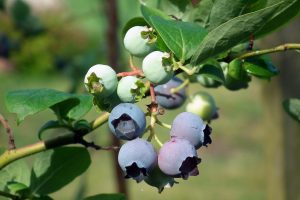
There are, of course, some plants which provide more than one type of food that sustains wildlife.
A great example is the woody shrub Highbush Blueberry, a common species growing in freshwater wetlands throughout Long Island. Its bell-shape flowers produce nectar consumed by many species of bees and butterflies; its pollen is eaten by some bees and other insects; the tasty berries are eaten by a variety of birds and small mammals (and, of course, a large mammal with two legs with whom you may be familiar if you like blueberry muffins or pies); and the leaves sustain caterpillars of many moths and butterflies including a wonderful group of small butterflies which includes the hairstreaks and elfins). So Highbush Blueberry is a “go-to” plant in moving your yard from paucity to productivity.
Another woody shrub to consider is elderberry which produces flat-topped berry clusters relished by birds. I enjoy watching the mockingbirds and catbirds each summer visit the ripened berry clusters of several elderberry bushes I’ve planted in the backyard.
Others shrubs to think about (and there are still others) include Spicebush, which is used by the beautiful Spicebush swallowtail butterfly as a food source while a caterpillar; and shadbush and chokeberry, both of which produce berries eaten by quite a few bird and small mammal species. If your property has moister soils think about planting Sweet Pepperbush, also known as Summersweet due to the strong and distinctive odors the plant gives off in summer. Many insects are attracted to these odiferous blossoms. Lastly, two other native “woodies” you might to consider for wetter soils are Steeplebush, also known as Spirea and Swamp Rose.
Trees
Speaking of woody plants, a number of tree species provide benefits to wildlife. Oaks, willows, hickories, cherries, beech, birch, dogwood, and sassafras are all especially valuable. Oak leaves, for example, are known to support hundreds of different kinds of caterpillars which are eaten by dozens of bird species. And bright red sassafras berries are consumed by a host of birds including cedar waxwings, catbirds, and several thrush species.
Wildflowers and grasses
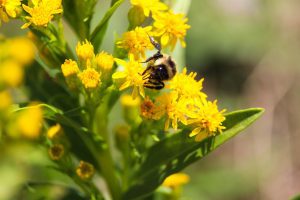
You can also affect positive change with non-woody plants such as wildflowers and grasses. Two excellent groups of plants that pollinators love are goldenrods and asters. Goldenrods (what a wonderful and evocative common name!) produce copious amounts of nectar that many bees, beetles, and butterflies consume as well as the plants’ pollen. (By the way — it’s not goldenrod pollen that causes hay fever — their pollen grains are too big — but rather ragweed, blooming at the same time, which has much smaller pollen grains since they are wind pollinated.)
Standing on the edge of a thick stand of goldenrod in bloom in late summer is to visit the busiest insect airport imaginable — dozens of bees, wasps, flies, beetles, and butterflies probing the countless flowers for nectar and pollen. Many moth and butterflies, as caterpillars, feed on goldenrod leaves. Several dozen goldenrod species are native to Long Island so there’s a lot of variety to choose from. Why not plant some “sunshine concentrate” in your flower beds?
Asters, too, are important wildflowers for wildlife providing nectar. Like goldenrods, they are beautiful, adding bright splashes of color to your yard such as the stunning purple rays of New England Aster. Several aster species are available for sale.
Milkweeds
Many other native species can become part of your local ecosystem. Milkweeds are another group, perhaps most well-known because Common Milkweed is the common host plant for the Monarch Butterfly, a species that’s the focus of a great deal of conservation concern due to their declining numbers (although in 2021 there appears to be a slight uptick in their numbers).
Besides Common Milkweed you should think about planting Swamp Milkweed if you have wetter, richer soils and Butterflyweed, a bright orange member of the milkweed family. Many species of insects are attracted to the nectar produced by these species and Monarch caterpillars can successfully grow eating Butterfly Weed leaves as the five caterpillars that came from a small flower garden by my back door can attest.
Other native wildflowers that sustain wildlife include, but are not limited to, Joe-pye weed, Boneset, Thoroughwort, Northern Blazing Stars, Bush Clovers, Mountain Mint, and Beggars Ticks.
To attract Ruby-throated Hummingbirds you need to plant red flowers — three good ones are Cardinal Flower (a stunner)!, Wild Bergamot (also known as Oswego Tea) and Trumpet Vine.
There’s value in planting a number of the same plants together, forming clumps rather than single plants. Some beetles don’t fly as well as other insects so its worth clumping together some natives to assist them. And odors and chemicals given off by groups of the same species are much stronger than scents given by individual plants so more is better!
—————————————-
If want to do more to make your yard wildlife friendly here’s a few other ideas:
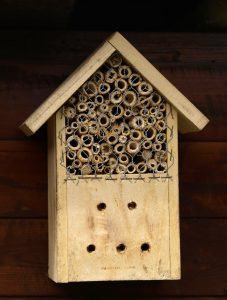
Build bee hotels. Many bees, wasps, and other pollinating insects can benefit from “bee hotels” placed around your property. A great project is to engage your children in researching, constructing and installing small bee hotels suitable to your property. These hotels will help some of the several hundred native bee species like mason bees which, unlike the European honeybee, nest solitarily. There’s many different designs you can find on-line such as drilling holes of various diameters into a several foot long segment of a “4 by 4”. Tying together a bunch of hollow bamboo stalks into a wood frame that hangs is an alternative design.
Can your Spray Can! It is tempting to turn to the easy fix of chemicals to control garden pests. The problem is these chemicals work too well; remember pesticides, herbicides, and other “cides” are all poisons, some of which have broad and deadly impacts to a large number of species. Research other, more benign options for controlling unwanted species — by doing so you allow the wanted species to flourish. Turn away from poisons.
Leave the Leaves and Save the Stubble! Layers of fallen leaves and standing stem stubble in your garden beds and throughout your yard sustain many species, especially insects that overwinter under leaves and in hollow stems.
Frog Logs to the Rescue! If you have an in-ground pool you may want to buy frog logs or ramps to allow animals like chipmunks a chance to escape. The “logs” are semi-circle floats in which a fabric ramp connects the float with the anchor portion filled with sand.
If you put away the poisons, invest in some frog logs if needed, retain leaves in flower beds and in the corners of your yard and, most importantly, plant native species to nourish pollinators and many other species of wildlife, your yard will become part of the living fabric of the larger world surrounding you. It’s axiomatic!
A resident of Setauket, author John Turner is conservation chair of the Four Harbors Audubon Society, author of “Exploring the Other Island: A Seasonal Nature Guide to Long Island” and president of Alula Birding & Natural History Tours and pens a monthly column for TBR News Media titled Nature Matters.
*This article originally appeared in TBR News Media’s Summer Times supplement on June 24.

